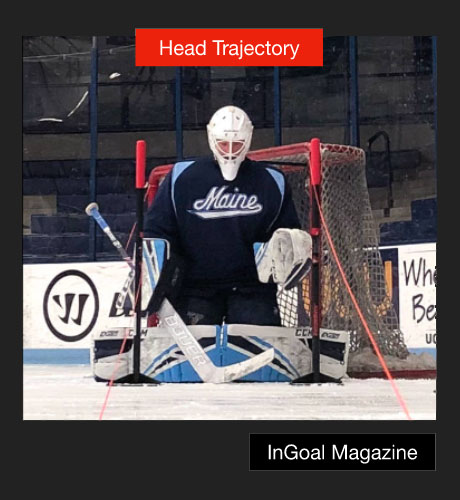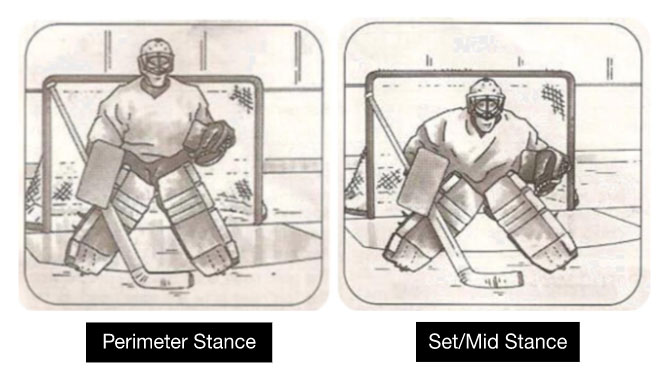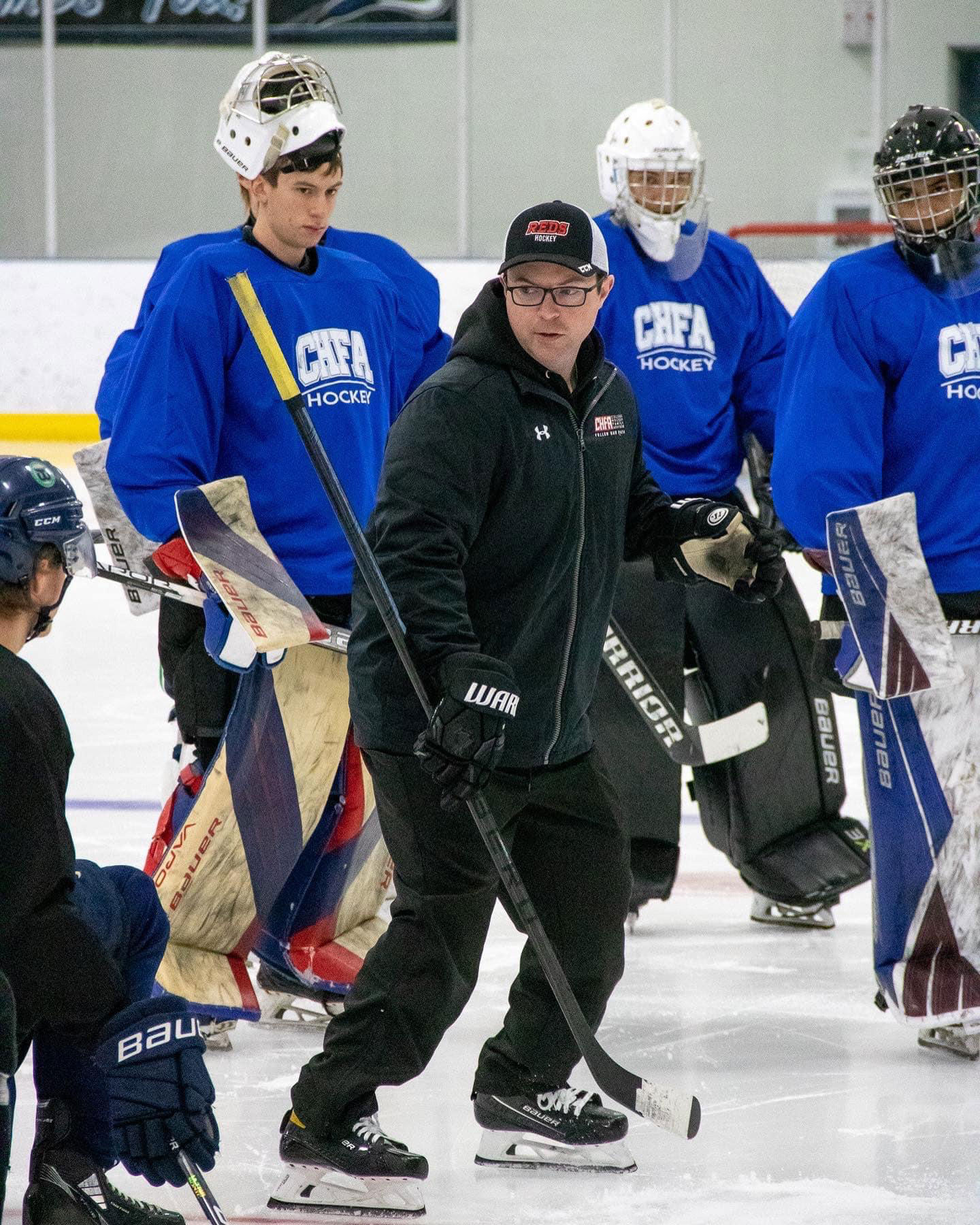The Stance
There are many blogs, social media accounts and video channels dedicated to goaltending but a lot of them neglect the most fundamental element to improving your ability.
The Stance, the stance or frame is the key to unlocking your full potential. Over the past twenty years of coaching and scouting goalies, I can comfortably say that there are as many variations in the stance as there are goalies. Every goalie is different, however there are some fundamental elements that are key to a successful, practical and efficient stance.

To start there has to be balance, good posture and symmetry in the stance to minimize effort in movement and save selection. Everything starts in the feet/skates, if the skates aren’t parallel and the weight is not over the ball of the foot then you cannot execute with efficiency. The spine angle should match the shin angle, which helps create balance over the edges. There are many goalies who play at a disadvantage due to poor posture, leading to inefficiency of movements.
The shoulders should be parallel as well and the hands balanced at “9 and 3 O’Clock”. Symmetry in the hands, slightly in front of the body and balanced is key for efficiency and execution of hand saves and minimizes holes through the body. There are many different opinions on glove position, based on the height of the goalie, experience and optics of the glove height in relation to the puck. In speaking with baseball and specifically catching coaches, balanced and relaxed are key. As the goalie strains to put their glove in any position above or below elbow height, it creates tension in the arm and reduces reaction time. If the body is unbalanced it creates many inefficiencies which lead to goals against.
The head/eyes need to be tilted down towards the ice. This is the basis of “Head Trajectory”, The eyes/nose/chin initiates all movement. The goalie needs to see the puck, with their eyes and shoulders over the puck to fill the most amount of net. As the head raises and lowers the eyes have to blur and adjust, which creates visual inefficiencies.

In the NHL and many of the leagues below we are starting to see two different types of stances, the perimeter stance and the set or mid stance.

What the best coaches and goalies have found is that if the puck is above the circles or outside of the dot lane, the goalie can take a slightly taller and narrower stance (perimeter stance). The goalie is slightly taller in the waist/chest and the knees. This allows the goalie to be in a more relaxed but ready state, allows them to get better visuals in traffic and having less tension in the body helps goalies track off the puck better.
Goalies have been told for years to “get set” once the puck is in the zone. The issue with this has been fatigue, both mentally and physically. In adopting the perimeter stance, goalies are in a set a ready position, that will create less fatigue. When young goalies are low and locked in, they tend to get tunnel vision. The perimeter stance will have the goalie in a more relaxed state than the set stance, where we can work on tracking off the puck and can allow the goalie to hold their edges better when moving. In the perimeter stance movement on the skates (standing) is easier, when low and locked in most goalies put themselves in a spot where their only option is to slide on a pass, regardless of puck proximity to the net. Therefore in developing and utilizing the perimeter stance we can help teach goalies patience on their edges and increase efficacy of movement.
InGoal Magazine

Matthew has been a coach and a scout for over 20 years at some of the highest levels. Matthew is coaching at Canisius College NCAA D1 this season. Matthew is a certified High Performance 1 coach and Goaltending Level 3 coach with Hockey Canada. Matthew works with the Ontario Hockey Federation, the Ontario Minor Hockey Association as well as the Northern Ontario Minor Hockey Association as a goaltending coach and mentor. Matthew's passion lies in goalie development and guiding players to become the best version of themselves. Since 2009 Matthew has travelled to Europe, Asia, Australia and the US to work with some of the best hockey programs and is looking forward to sharing what he's learned with the PGS Hockey Community.

 United States (
United States (



